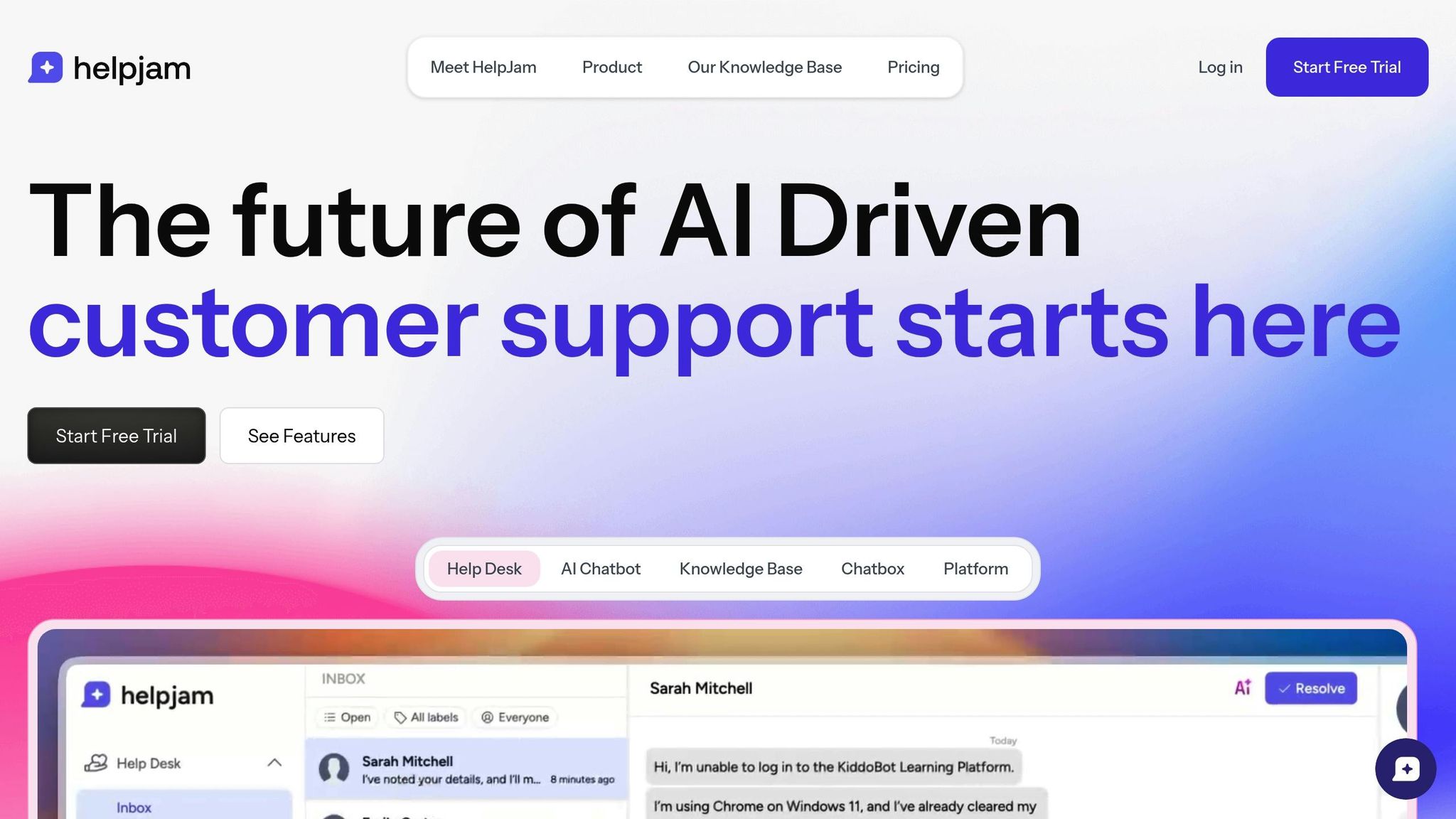Creating a Knowledge Base That Customers Actually Use
Learn how to create an effective knowledge base that enhances customer self-service, reducing support costs and improving satisfaction.

A great knowledge base saves money and keeps customers happy. Consider this: live support costs $8.01 per interaction, but self-service costs only $0.10. Companies like Microsoft have cut support costs by 77% using knowledge bases, and self-service rates can hit 80% when done right.
Here’s what makes a knowledge base effective:
- Clear Structure: Organize content into categories, subcategories, and articles for easy navigation.
- Powerful Search: Use AI tools like natural language processing and predictive suggestions to help users find answers fast.
- Simple Content: Write in plain language, include visuals, and update content regularly to maintain trust.
AI tools can enhance this further with features like smart recommendations, auto-translation, and content creation assistance. Businesses using AI see faster updates, better global reach, and fewer support tickets.
Ready to improve? Focus on structure, search tools, and clarity to build a knowledge base customers actually use.
Building Blocks of a Good Knowledge Base
A solid knowledge base relies on three key components: structure, search functionality, and clarity. These elements work together to ensure users can find the help they need quickly and easily.
Content Structure and Organization
A well-organized hierarchy is essential to address the common pitfalls of poorly structured knowledge bases. The most effective systems use a three-tiered approach:
| Level | Purpose | Example |
|---|---|---|
| Main Categories | Broad topic areas | Getting Started, Billing, Security |
| Subcategories | Specific subject areas | Account Setup, Payment Methods, 2FA |
| Articles | Individual help documents | "How to Reset Your Password" |
For instance, Mailchimp reorganized over 500 articles into this structure and saw a 35% drop in support tickets. Their Customer Experience Director highlighted the importance of "clear, action-oriented content" and the use of visual aids to achieve these results.
Search and Navigation Tools
A powerful search function is critical for helping users find information efficiently. The best search tools include features like:
- Natural language processing for conversational queries
- Predictive search suggestions to guide users
- Synonym recognition to account for varied terminology
- Result filtering options to narrow down searches
These features tackle the issue of weak search tools, which contribute to 53% of purchase abandonment cases.
Writing Clear, Useful Content
Clear and actionable content plays a key role in achieving high self-service rates, which can reach up to 80%. To create effective articles, focus on the following:
- Begin with a clear problem statement.
- Provide step-by-step instructions, supported by screenshots.
- Include troubleshooting tips for common issues.
- Conclude with links to related articles or next steps.
Businesses that update their knowledge base quarterly report an 85% increase in customer retention rates. Additionally, well-maintained content can deflect 60% of basic queries, allowing support teams to focus on more complex issues.
AI Tools for Better Knowledge Bases
A solid structure ensures accessibility, but AI tools take it a step further by adding predictive capabilities and efficiency.
Smart Article Recommendations
AI-driven recommendation systems analyze user behavior to highlight the most relevant content. For instance, one enterprise SaaS company using such tools saw a 28% drop in support tickets within six months. This ties directly to the earlier point about cutting down on the $8.01 average cost of live support.
Auto-Translation Features
For businesses with global audiences, AI removes language barriers while keeping the brand's tone consistent:
| Benefit | Impact |
|---|---|
| Instant multilingual content | Supports over 100 languages simultaneously |
| Consistent formatting | Ensures brand presentation stays uniform |
| Technical term accuracy | Reduces translation errors by 40% |
| Learning from user feedback | Continuously improves translation quality |
Using AI for translation can triple a knowledge base's global reach, making customer support far more efficient across regions.
AI Content Creation Tools
AI writing tools are transforming how teams create and manage knowledge base articles. These tools leverage natural language processing to assist with:
- Article Drafting: Generating first drafts from existing materials
- Content Refinement: Enhancing readability and engagement
- Update Tracking: Pinpointing outdated content
- Terminology Consistency: Standardizing language across articles
Combining AI's speed with human review ensures quality. Teams using these tools report completing updates 60% faster while maintaining high standards - supporting the earlier statistic of an 85% retention boost from quarterly updates.
HelpJam: Modern Knowledge Base Software

HelpJam brings AI directly into the knowledge base workflow, combining structured tools with automation to streamline processes.
HelpJam's AI Toolkit
HelpJam simplifies the process of creating and managing a knowledge base with its AI-powered tools. Its AI Writing Assistant, built into the text editor, helps teams create, refine, and translate content while staying consistent with their brand. For instance, one healthcare provider saw a 60% boost in article creation speed thanks to these tools, supporting Gartner's findings on cost savings.
Beyond just content creation, HelpJam offers:
| Feature | Functionality | Outcome |
|---|---|---|
| Smart Search | AI-driven search with contextual understanding | Boosts self-service success by 25%, addressing a 53% abandonment rate |
| Content Analytics | Tracks performance in real time | Enhances the impact of content |
| SEO Optimization | Automatically fine-tunes content | Increases visibility in search engines |
Keeping Content Up-to-Date
HelpJam uses AI to flag outdated articles and prioritize updates based on real-time engagement data.
Key tools include:
- AI-driven content audits that track changes to ensure accuracy
- Performance analytics that highlight areas for improvement
HelpJam's AI Chatbot
The AI Chatbot connects the knowledge base with customer inquiries, delivering instant answers based on existing articles.
Its effectiveness comes from three main features:
-
Smart Learning
Analyzes knowledge base content to expand its ability to answer questions. -
Intelligent Escalation
Passes complex issues to human agents when needed. -
Continuous Improvement
Works alongside AI content audits to identify and fill knowledge gaps.
Conclusion: Next Steps for Your Knowledge Base
To improve your knowledge base, consider these three key actions:
1. Review Your Current Content
Take a close look at the support content you already have. Use analytics to pinpoint common customer questions and recurring support tickets. This will help you decide which articles need updates or which new ones to create. Tools like HelpJam can assist by identifying outdated material or missing topics, making the process smoother.
2. Use AI Tools to Boost Efficiency
AI can play a big role in improving your knowledge base. Consider tools that offer:
- Smart search features
- Automated content creation
- Integration with real-time analytics
- Support for multiple languages
3. Keep Your Content Up-to-Date
Ensure your knowledge base stays relevant by:
- Running quarterly content reviews with automated tools
- Using search data to guide updates
- Monitoring performance with metrics like completion rates
FAQs
Here are answers to some frequently asked questions about optimizing your knowledge base:
What is an example of a good knowledge base?
HelpJam’s knowledge base is a standout example. We achieved a 92% satisfaction score by leveraging AI suggestions and organizing content into clear categories. Our approach reflects key best practices:
- User-friendly navigation with well-defined categories
- AI-driven search tools for faster results
- Consistent updates informed by user feedback
- Support for multiple languages
How do you measure self-service success?
There are several ways to evaluate how well your self-service options are performing:
- Self-Service Rate: Check the percentage of issues resolved without involving a support agent.
- Article Performance: Look at metrics like page views, time spent on articles, completion rates, and user feedback.
- Search Analytics: Review data on popular queries, failed searches, and click-through rates.
- Support Impact: Assess how ticket volumes change after updating or adding articles.
Tools like HelpJam's analytics dashboard (previously mentioned) can simplify tracking these metrics, using AI to pinpoint areas for improvement.





